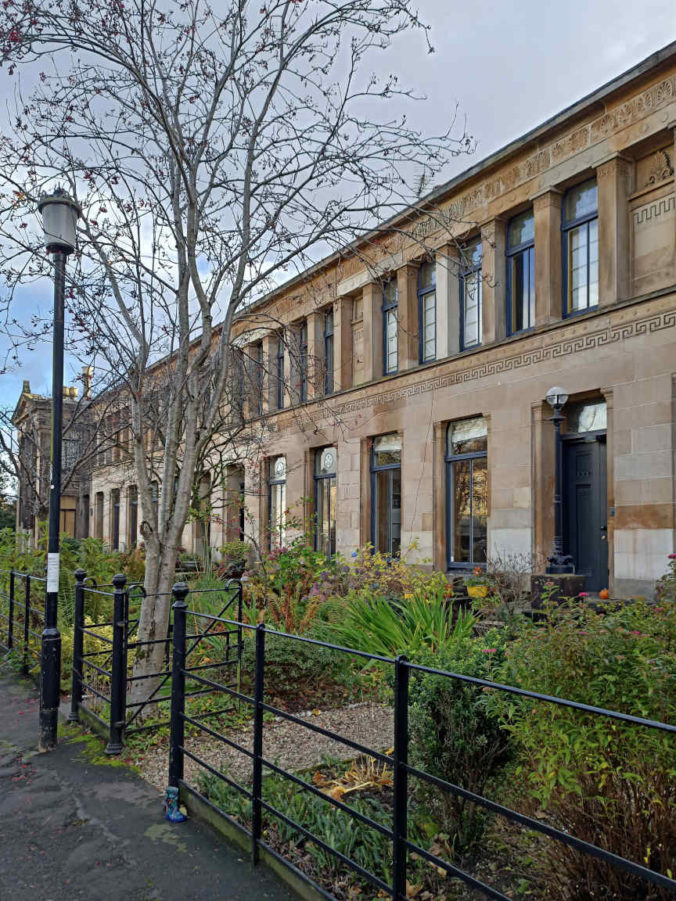Grocers
The first occupant of 5 Moray Place was also the first of three grocers to live there; Gavin Wilson was resident between 1862 and 1865. He was a hamcurer & provision merchant, of Wilson, Ferguson & Co at 62 Little Street in Calton.
He was born in 1822, the second of five children, to William Wilson & Mary Cleland in Mauchline, Ayrshire. He moved to Glasgow in the 1840s and joined the grocery trade. His sister Janet married Hugh Slimmon in 1846 and Gavin moved in and boarded with them and their family for many years. Slimmon was himself a wholesale grocer at 48 Hutcheson Street.
Gavin moved to Moray Place in 1862 but moved out again in 1865 and was back with the Slimmon family in the 1871 census. The Slimmon family ended up at Duneaton Villa, 15 Albert Drive, Pollokshields, as did Gavin, and he died there in 1915 .
My research originally suggested he was unmarried, and didn’t like life alone in Moray Place, but the current owners (see comments) tell me the deeds record that the property was bought in the name of his wife, Annie Ferguson or Wilson, for £510. I can find no trace of Annie, but also no trace of a business partner called Ferguson either. He only briefly traded under that name before disappearing from the PO Directories around 1866; perhaps subsequently he just worked for the Slimmons. So I sense an intriguing tale, but can’t take it further at present.



Recent Comments